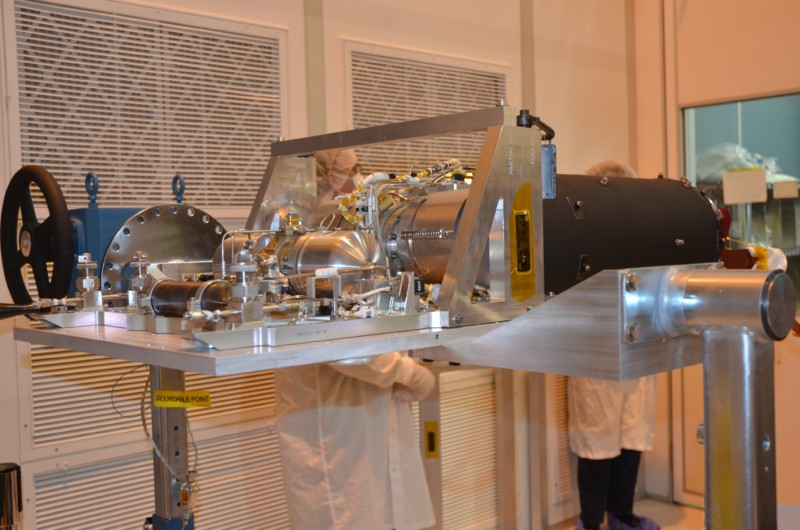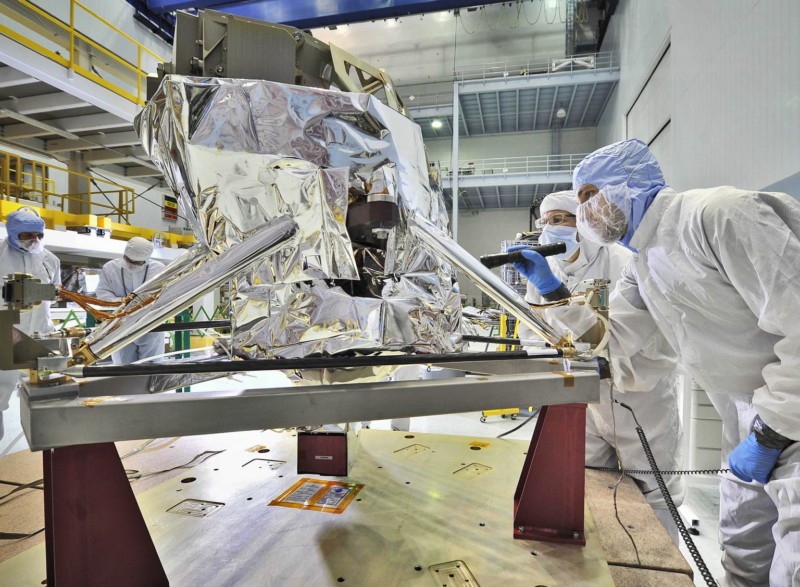![]()
One of the James Webb Space Telescope’s key instruments that will allow it to see some of the first galaxies that ever formed has passed a critical milestone. The Mid-Infrared Instrument (MIRI) has reached an operating temperature of minus 447 degrees Fahrenheit.
Over the past couple of months, the James Webb Space Telescope has been successfully preparing its systems to begin its work of photographing the history of the universe. Its camera systems were first successfully activated, then its mirrors performed critical alignment stages in February before becoming fully aligned in mid-March.
On April 7, Webb’s MIRI reached its final operating temperature of below 7 Kelvin, which equals minus 447 degrees Fahrenheit, or minus 266 degrees Celsius.
Why Webb’s MIRI Needs to be So Cold
In order to capture the infrared light, which all four of Webb’s cameras are designed to do, they need to be cold — very, very cold. All of the celestial objects that Webb will observe emit infrared light, but so do other warm objects including Webb’s own electronics and hardware. To suppress these emissions and to allow for clearer photos, Webb’s MIRI — which detects longer infrared wavelengths than the other three instruments — needs to be even colder than the objects it intends to observe.
NASA says that reducing the chances of infrared interference isn’t the only reason MIRI needs to be so cold. It also needs to suppress what is called dark current, or electric current created by the vibration of atoms in the detectors themselves.

“Dark current mimics a true signal in the detectors, giving the false impression that they have been hit by light from an external source. Those false signals can drown out the real signals astronomers want to find. Since temperature is a measurement of how fast the atoms in the detector are vibrating, reducing the temperature means less vibration, which in turn means less dark current,” NASA explains.
For every degree the instrument’s temperature goes up, the dark current goes up by a factor of about 10.
Keeping Webb Cool
To cool the MIRI, NASA uses a combination of tools. First is the giant sun shield that looks like the base of the Webb telescope in photos and pictures, but that only allows the instruments to drop to 90 Kelvin, or minus 298 degrees Fahrenheit. To drop an additional 83 degrees Kelvin, Webb requires the help of an electrically powered cryocooler. After successfully reaching 6.4 Kelvin — known as the “pinch point” — the team behind the technologically advanced cooler can pat themselves on the back for a job well done.
“The MIRI cooler team has poured a lot of hard work into developing the procedure for the pinch point,” Analyn Schneider, project manager for MIRI at NASA’s Jet Propulsion Laboratory in Southern California, says. “The team was both excited and nervous going into the critical activity. In the end, it was a textbook execution of the procedure, and the cooler performance is even better than expected.”

While Webb has experienced nothing but incredible success to this point, there are still further challenges ahead before the telescope can be deployed on its first scientific observation mission. Now that the instrument is at operating temperature, Webb team members will take test photos of stars and other celestial objects to calibrate and assure the instrument is operating as intended.
“I am immensely proud to be part of this group of highly motivated, enthusiastic scientists and engineers drawn from across Europe and the U.S.,” Alistair Glasse, MIRI instrument scientist at the UK Astronomy Technology Centre (ATC) in Edinburgh, Scotland, says.
“This period is our ‘trial by fire’ but it is already clear to me that the personal bonds and mutual respect that we have built up over the past years is what will get us through the next few months to deliver a fantastic instrument to the worldwide astronomy community.”
Header image: NASA GSFC/CIL/Adriana Manrique Gutierrez
Author: Jaron Schneider
Source: Petapixel



